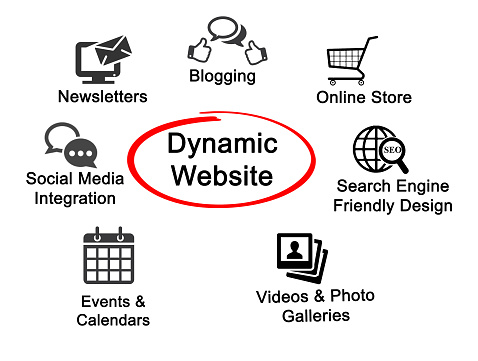With more than five billion internet users worldwide, modern consumers are a lot pickier than they used to be. There is an overwhelming wealth of content, of varying quality, populating the web. A lot if it is first-rate, but even more of it is substandard. If a prospective customer lands on your website and decides it’s not worth reading, they will quickly find a competitor who can give them the answers they need.
That’s why first impressions matter. You need to find a way to engage your web visitors and keep them coming back for more. And one way to achieve this is through dynamic web content.
What is Dynamic Web Content?

Dynamic content refers to that which is modeled on the behavior of your website visitors. It regularly updates based on their engagement, demographics, preferences, and which stage of the customer lifecycle they are in. If Person A and Person B visit your homepage today, they may well see completely different content. And what’s more, each of them may have a completely new experience when they visit your website for the second or third time.
Common dynamic website examples include e-commerce sites, blogs, and any platforms where information must be updated regularly. This stands in contrast to static content, where websites show the same material for every single visitor. Dynamic websites are much more powerful as you can give each visitor a tailored experience, showing them the exact content they need to solve their problems and nurture them towards a sale.
But how can you turn your old, static website into a dynamic conversion machine? Here are a few suggestions.
5 Ways to Create a Dynamic Website

- Personalized recommendations
If you operate a retail website, you want to make it as easy as possible for your customers to find products and add them to their baskets. One way you can do this is by displaying recommendations on your homepage. But if you are relying on static content, this can be a bit of a shot in the dark. You can put your most popular items at the top of the list, but you’re just playing a numbers game.
With dynamic content, you can tailor these recommendations to each person that visits your website. This personalized homepage will be based on a range of factors, including demographic information, purchasing history, and whether they are first-time visitors or existing customers. This process treats each visitor as an individual and makes them more likely to complete a transaction.
- Geographic customer segmentation
If you know where your web visitors are browsing from, you can offer much better recommendations and offers. Many of your customers will be searching for products or services that are local to them. They don’t want to see search results from companies that are halfway across the country.
By utilizing geographic customer segmentation, you can provide the best offer for each client, thereby gaining loyalty and return custom.
- Dynamic popups

We all know popup ads can be annoying, but what if each one was made up of highly targeted content directly addressing your individual needs? Dynamic ads can appear according to customer data and context-based clues, such as how long a visitor has been browsing for, or which specific pages they are looking at.
For example, a sales-heavy ad that pops up the minute someone lands on your homepage is likely to be distracting and annoying. But offering a potential buyer a discount code just before they checkout will build trust and customer loyalty.
- Personalized emails
We’ve all received supposedly personalized emails from brands that begin with “Dear [First Name],” but you can do a lot more with dynamic content. By tailoring the content of your promotional emails, cart abandonment emails, or transactional emails, you can increase conversions through personalized messaging. Use the customer’s previous shopping habits, customer lifecycle information, or browsing history to display content that resonates with each individual user.
- Dynamic search engines
When a visitor types a query into your website’s search bar, you want to make it as easy as possible for them to find the solution to their problem. You could wait for them to finish typing in their question, but every second counts. By using dynamic search, you can expedite the process and get them to a transaction a lot quicker.
Once they’ve typed in a character, your search bar can immediately start displaying the most likely queries based on the letters used and that individual’s own habits and preferences.
Create a Dynamic Business Website Today

These are just a few of the ways in which dynamic web content can supercharge your digital presence. Jeff City Web Design specializes in creating dynamic, visual, and effective websites. Get in touch today to find out how we can help you succeed.

